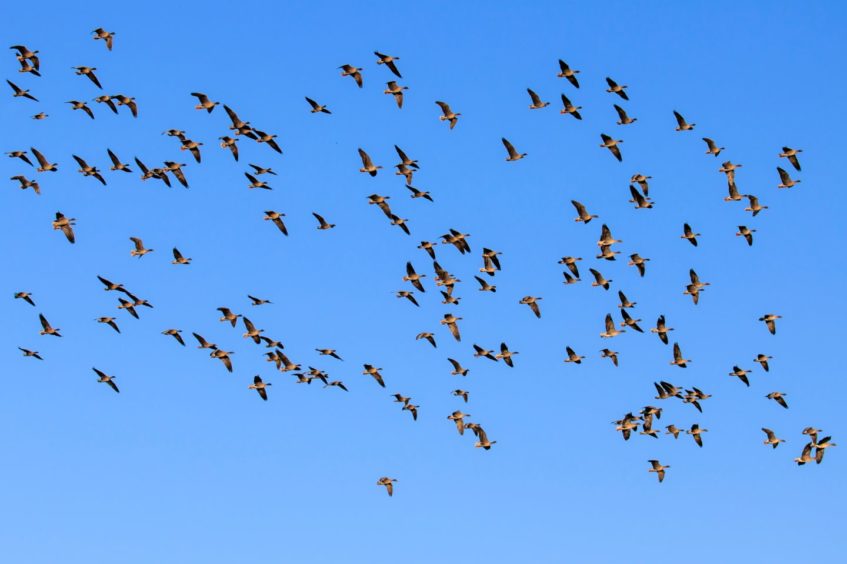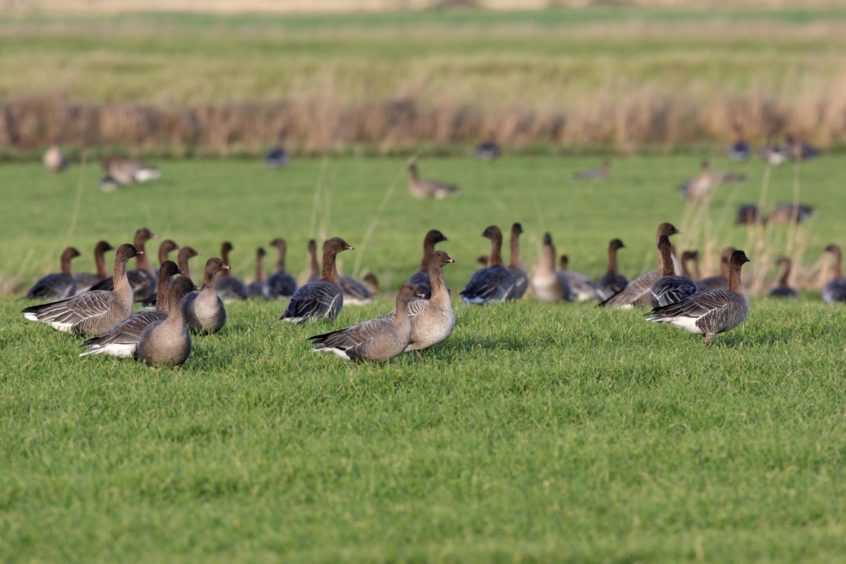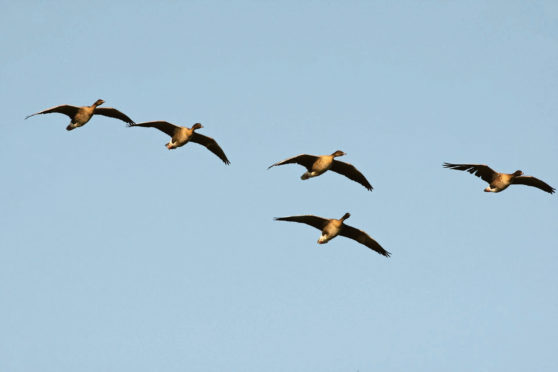Dusk on a December evening on the estuary of the River Devon near Stirling and in the distance there is a murmuring, ever so faint at first, but gradually gaining in intensity.
It is the call of the wild geese, scores of greylags and pink-foots making their way from their feeding grounds in the fields of central Scotland and down towards their roosting sites by the inner Forth estuary.
It is a wonderful time to be down by the estuary, the light fading, and the pastel heavens alive with chevrons of geese as they circled noisily above looking for a suitable place to settle for the night. This is often a mudflat, but when the tide is high, nearby fields and other open ground will be the preferred choice.
On watching such evening rituals, I often wonder whether these birds hail from Iceland or Greenland and conjure in my imagination the wild open scenery that unfurls across their breeding grounds – places backdropped by snow-clad mountains and a myriad of pools and lakes.

The Devon estuary, as is the case with all Scottish estuaries, really comes to life in winter, offering a safe sanctuary for a variety of waders and waterfowl, as well as providing abundant food within the thick gloopy mud. Earlier this year, when writing my new book on the wildlife of the Devon, ‘If Rivers Could Sing’, I ventured out onto the soft, clawing mud to gain an insight into the invertebrate life that prospers here.
It was a most interesting experience. The Devon is an unusual estuary in that it flows into another estuary – the inner Forth – just as how the River Earn flows into the inner Tay. As such, fresh water predominates over salt, and there is not the same biodiversity as one might find in estuaries such as the Eden near St Andrews.
On turning over a rock on the Devon estuarine mud, a crawling mass of amphipods (small shrimp-like crustaceans) was revealed. I was surprised by their abundance, and every rock I turned held the same large numbers beneath. They were most probably an amphipod species known as the brackish-water shrimp.
These greyish, translucent crustaceans – some almost half-an-inch long – were undoubtedly what the shelducks and teal in winter were feeding upon. These amphipods would also be eagerly devoured by flounders and sea trout, and as such, represented a fundamental keystone in the food chain that helps support so much other life.

The abundance of these amphipods really shone out, and while this estuary might not be as diverse in invertebrate life as others, it more than makes up for this by the sheer volume of one species.
It was a fascinating discovery, and as I squelched my way back up the mud bank, I had a real sense of satisfaction at having revealed one of the estuary’s inner secrets.
Info
Amphipods are a type of crustacean with laterally compressed bodies. Whilst mainly aquatic, this group of animals also includes the sandhoppers often found on sandy beaches.










